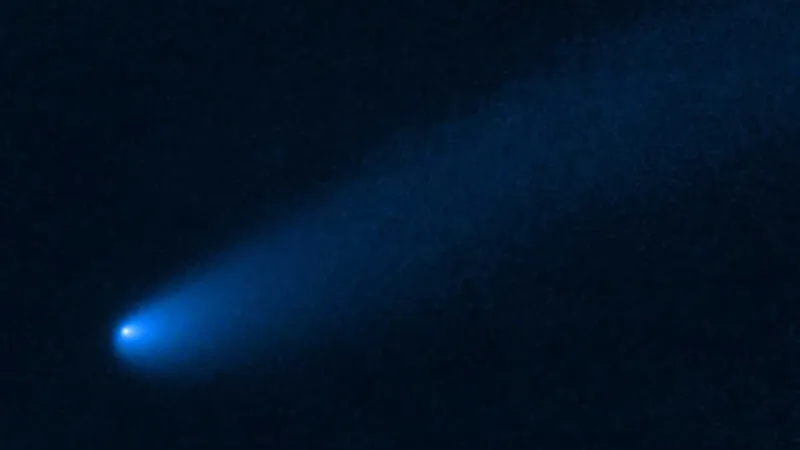
Is Another 'Devil' Comet Looming? Volcanic Icy Body Erupts with Unprecedented Fury!
2024-11-11
Author: Emily
In an astonishing display of cosmic fury, a volcanic comet, known as 29P/Schwassmann-Wachmann, has unleashed a series of violent explosions, dazzling astronomers and stargazers alike.
Over a mere 48-hour period, the icy body erupted four times, generating an incredible amount of energy that has made the comet glow nearly 300 times brighter than its usual state. This remarkable phenomenon has raised eyebrows in the scientific community as experts scramble to uncover the cause of this sudden energetic awakening.
29P is classified as a centaur, a rare group of comets that traverse the inner solar system among about 500 known specimens.
Measuring an impressive 60 kilometers in diameter, 29P has now captured the spotlight with its explosive behavior. The recent outbursts mark the most violent activity witnessed in over three years, a surprising turnaround for a comet typically known for its relatively quiet demeanor.
What truly sets 29P apart is its classification as a 'cryovolcanic comet,' which is characterized by an icy shell encasing volatile components like dust and gas.
As 29P approaches the sun, it absorbs intense radiation, which superheats the material within. The resulting pressure can cause the brittle shell to crack, violently ejecting the comet's icy core—nicknamed 'cryomagma'—into space. This rapid expansion and eruption create a shimmering coma, a fuzzy halo around the nucleus that reflects a greater amount of sunlight, resulting in increased brightness.
The British Astronomical Association (BAA) noted that the initial major eruption occurred on November 2, with three subsequent explosiveness occurring almost immediately after.
These eruptions expelled a vast cloud of debris that reflected 289 times more light than the comet's nucleus, drawing attention from observers on Earth.
With echoes of last year's sensational “Devil Comet”—12P/Pons-Brooks, which showcased dramatic eruptions forming distinct 'horns' during its explosive period—scientists wonder if 29P will follow suit.
The horns observed in 12P arose from its repeated explosions, a phenomenon likely to be mirrored in 29P as continuous outbursts could reshape its structure.
Despite the recent energetic displays, 29P's last significant eruption occurred in November 2022, during which it jettisoned over a million tonnes of debris into space.
Prior to that, five major explosions were recorded in September 2021, though this latest round of eruptions has exceeded previous events in terms of size and violence.
Just as intriguing as its eruptions is the journey of cryovolcanic comets like 29P.
These objects travel in elongated elliptical orbits, ranging from the outer edges of the solar system to the inner solar system, where they can display violent behavior upon their return. The cycle of approaching the sun, erupting, and being expelled back to the outer realms can take decades, centuries, or even thousands of years.
As scientists continue to monitor 29P's explosive activity closely, we can only speculate about the treasures this volatile icy body may still reveal.
Keep your eyes on the skies—the cosmic dance of 29P might just be the astronomical spectacle you've been waiting for!









 Brasil (PT)
Brasil (PT)
 Canada (EN)
Canada (EN)
 Chile (ES)
Chile (ES)
 España (ES)
España (ES)
 France (FR)
France (FR)
 Hong Kong (EN)
Hong Kong (EN)
 Italia (IT)
Italia (IT)
 日本 (JA)
日本 (JA)
 Magyarország (HU)
Magyarország (HU)
 Norge (NO)
Norge (NO)
 Polska (PL)
Polska (PL)
 Schweiz (DE)
Schweiz (DE)
 Singapore (EN)
Singapore (EN)
 Sverige (SV)
Sverige (SV)
 Suomi (FI)
Suomi (FI)
 Türkiye (TR)
Türkiye (TR)